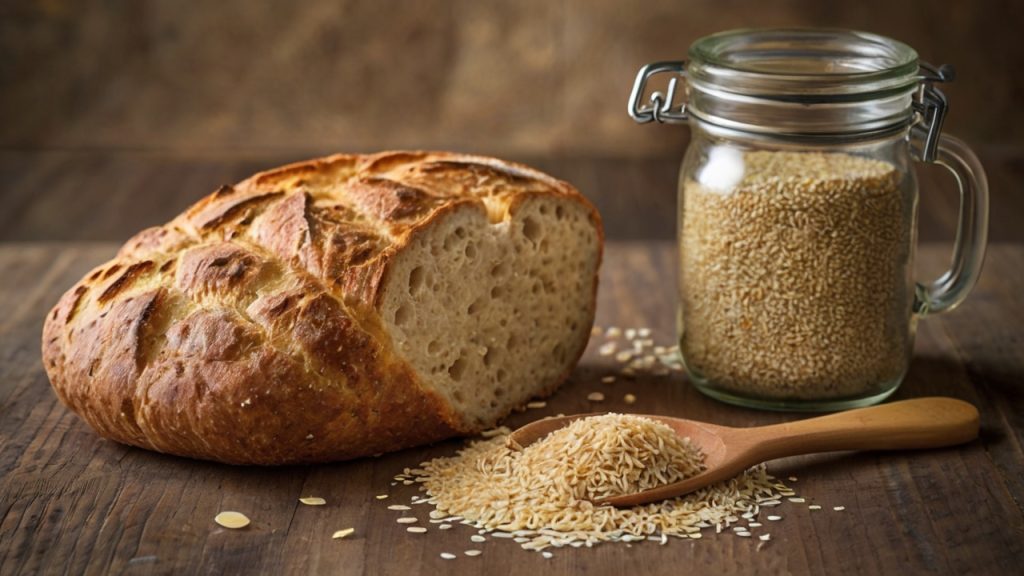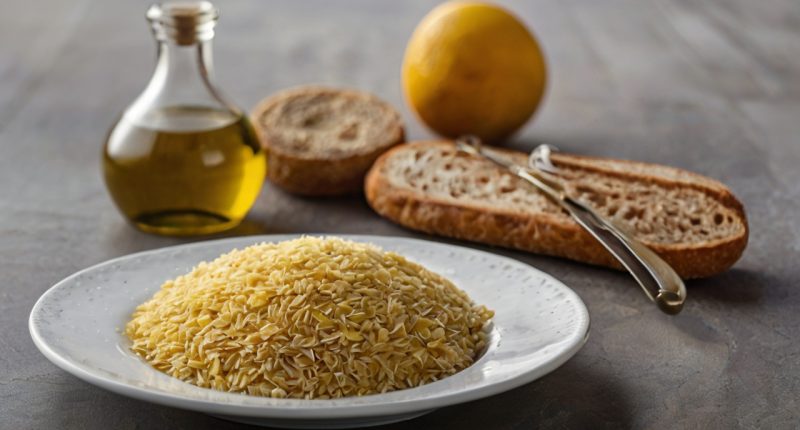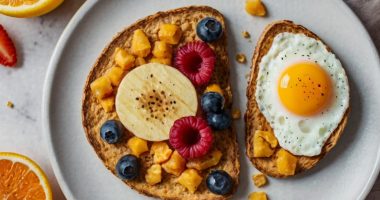The gluten free diet has gained immense popularity over recent years, not only for people with gluten intolerance or celiac disease but also for those looking to explore different dietary options. In this detailed guide, we’ll explore what gluten is, its impact on health, gluten-free food options, recipes, and a sample one-day meal plan to help you navigate a gluten free lifestyle.
Table of Contents
What is Gluten?
Gluten is a complex group of proteins primarily found in wheat, barley, and rye. It is made up of two main proteins, gliadin and glutenin, which contribute to the elastic and stretchy properties of dough. When flour is mixed with water, these proteins form a network that gives bread its characteristic chewiness and helps it maintain its shape as it rises. This is why gluten is essential in many baking processes, providing structure and texture to a wide variety of baked goods.
At the molecular level, gluten proteins are categorized as prolamins (gliadin) and glutelins (glutenin). Gliadin is responsible for the dough’s ability to rise during fermentation, thanks to its viscous and extensible nature. Glutenin, on the other hand, provides strength and elasticity, allowing the dough to stretch and trap gas bubbles produced by yeast or other leavening agents. This unique combination of properties is what makes gluten such a valuable component in baking.
Gluten is a family of proteins found primarily in wheat, barley, and rye. It is responsible for the elastic texture of dough, helping it rise and keep its shape. Gluten is commonly found in bread, pasta, cereals, and many processed foods. While it plays a crucial role in baking, it can be problematic for individuals with gluten sensitivity or celiac disease.
Gluten: Beneficial or Harmful?
For most people, gluten is harmless and provides a source of protein. However, it can be detrimental for individuals with celiac disease, non-celiac gluten sensitivity, or wheat allergy. Celiac disease is an autoimmune disorder where the ingestion of gluten leads to damage in the small intestine. Symptoms can range from digestive discomfort to severe nutrient deficiencies.
In people with celiac disease, the immune system mistakenly attacks the small intestine when gluten is consumed, leading to inflammation and damage to the intestinal lining. This damage can interfere with nutrient absorption, leading to symptoms like bloating, diarrhea, fatigue, and anemia. Non-celiac gluten sensitivity can cause similar symptoms but does not result in intestinal damage.

If you suspect gluten is causing you health issues, consult a healthcare professional for proper diagnosis. If diagnosed with celiac disease or gluten sensitivity, adhering to a strict gluten-free diet is crucial. This involves eliminating all sources of gluten from your diet, which may require careful planning and label reading.
Gluten Free Foods
Going gluten-free doesn’t mean you have to compromise on taste or variety. Many foods are naturally gluten-free, including:
- Fruits and Vegetables: All fresh fruits and vegetables are gluten-free.
- Meat and Poultry: Fresh cuts of meat, poultry, and fish are naturally gluten-free. Be cautious with processed meats, as they may contain gluten.
- Dairy: Most dairy products are gluten-free, but watch out for flavored or processed products.
- Grains and Starches: Rice, quinoa, millet, buckwheat, and gluten-free oats are excellent substitutes for wheat-based products.
- Legumes and Nuts: Beans, lentils, and nuts are great sources of gluten-free protein and fiber.
- Gluten-Free Flours: Almond, coconut, and tapioca flour can be used in baking and cooking.
Gluten Free Recipes
Gluten-Free Desserts
- Almond Flour Brownies: These rich, fudgy brownies use almond flour and are completely gluten-free.
- Coconut Macaroons: Made with shredded coconut and sweetened condensed milk, these are a delightful treat.
- Gluten-Free Apple Crisp: Use gluten-free oats and almond flour to make a delicious apple crisp.
Gluten-Free Breakfast Ideas
- Avocado Toast on Gluten-Free Bread: A quick and nutritious start to your day.
- Gluten-Free Pancakes: Use a gluten-free flour blend to make fluffy pancakes.
- Smoothie Bowls: Blend your favorite fruits with some gluten-free oats and top with nuts and seeds.
1 Day Gluten Free Diet Plan
Gluten Free Breakfast: Avocado toast on gluten-free bread with a side of fresh berries.
Gluten Free Lunch: Grilled chicken salad with quinoa, mixed greens, cherry tomatoes, and a lemon vinaigrette.
Gluten Free Dinner: Baked salmon with a side of steamed broccoli and sweet potato.
Gluten Free Snack: A handful of almonds or a piece of gluten-free fruit.
Gluten Free Bread Recipes
- Almond Flour Bread: Made with almond flour, eggs, and a touch of honey, this bread is moist and flavorful.
- Buckwheat Bread: Despite its name, buckwheat is gluten-free and makes for a hearty bread option.
- Rice Flour Bread: Light and airy, this bread is perfect for sandwiches or toast.
Gluten Free Lunch Ideas
- Gluten-Free Sushi: Sushi made with rice and vegetables is naturally gluten-free. Ensure soy sauce is also gluten-free.
- Quinoa Salad: A mix of quinoa, cucumbers, bell peppers, and feta cheese, drizzled with olive oil.
- Zucchini Noodles: Zucchini spiralized into noodles and tossed with a tomato basil sauce.
Is Gluten Free Sushi Possible?
Yes, gluten-free sushi is not only possible but also readily available. Sushi rice is gluten-free, and by opting for fresh ingredients like fish and vegetables, you can enjoy sushi without worry. Always check that soy sauce or other condiments are gluten-free, as some may contain wheat. Gluten-free soy sauce can often be found in health food stores or Asian markets.





